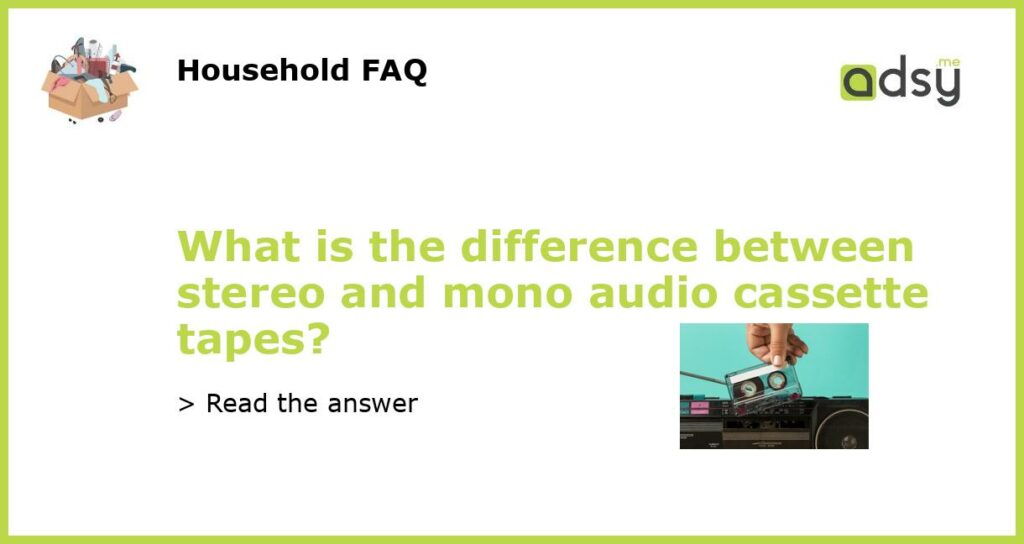Stereo vs Mono: Understanding the Difference
If you’re an audio enthusiast, you might have already heard the terms mono and stereo audio cassettes, but do you know what the difference between the two is? Before the rise of digital music, cassette tapes were popular sound carriers for music lovers. While they may be relatively outdated now, understanding the difference between mono and stereo for cassette tapes can help in assessing the value and quality of vintage or second-hand tapes.
Mono Cassette Tapes: What They Are
Mono or monaural audio cassette tapes carry audio signals that have been combined or summed and recorded onto a single channel. This means that both the left and right audio signals are mixed together and played back through a single speaker. Mono tapes were the earliest type of audio tapes and are mostly used for recording speeches, audiobooks, or for older music recordings where stereo recording technology had not yet been developed.
Stereo Cassette Tapes: What They Are
Stereo cassette tapes, on the other hand, carry two separate audio channels, left and right, which are recorded onto two separate tracks. Stereo recordings provide a more immersive listening experience as the different sounds are separated and panned between the left and right speakers, providing a sense of depth and clarity. Stereo cassette tapes became popular in the late 1960s, during which recording technology advanced to allow for multiple audio channel recording.
Differences in Sound Quality
Compared to mono cassette tapes, stereo cassette tapes offer a better sound quality due to the separation of the left and right audio channels. As such, stereo recordings are considered superior in terms of soundstage and depth compared to mono recordings. However, it is important to note that the quality of a cassette tape also depends on factors like the type of tape used, the recording equipment, and the overall condition of the cassette.
Final Words
Today, cassette tapes may no longer be the primary way of listening to music, but they still hold significant value in terms of preserving history and cultural heritage. Knowing the difference between mono and stereo cassette tapes can help you assess their quality and value, and appreciate the history of audio recording.


![Guardians Of The Galaxy: Awesome Mix Vol. 1 [CASSETTE]](https://m.media-amazon.com/images/I/51D2YTc-jmL.jpg)
![More [CASSETTE]](https://m.media-amazon.com/images/I/616mIYPZ3pL.jpg)
![The Number of the Beast (40th Anniversary) [CASSETTE]](https://m.media-amazon.com/images/I/515EXAs-OCL.jpg)
